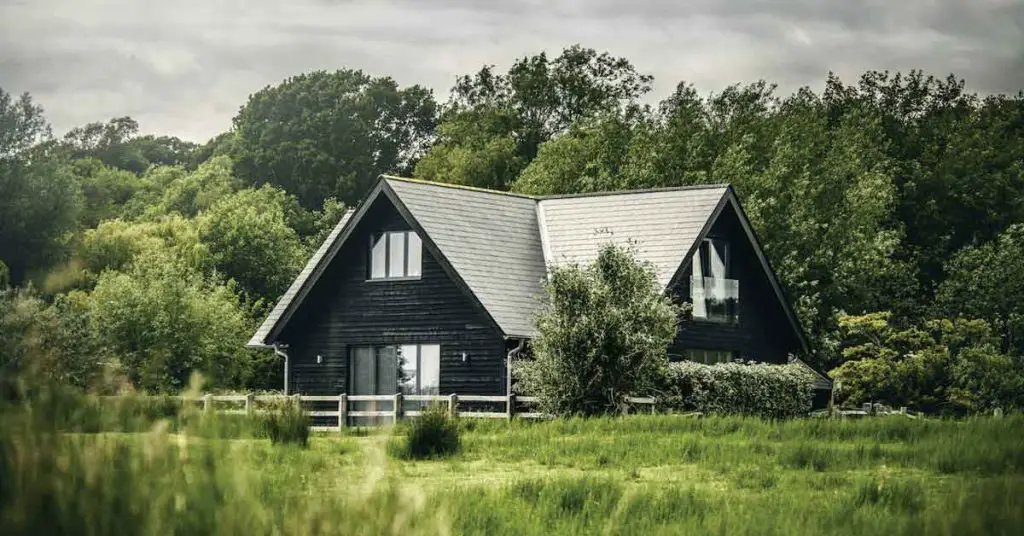Introduction to USDA Plant Hardiness Zone Map
If you’ve ever wondered why your neighbor’s tomatoes flourish while yours struggle—or why certain perennials seem to defy the seasons in your backyard—the answer may lie in something many gardeners overlook: the USDA Plant Hardiness Zone Map. This essential tool helps gardeners, homesteaders, and landscapers understand which plants are most likely to thrive in their specific region.
In this article, we’ll break down what the USDA Plant Hardiness Zone Map is, why it matters, and how it’s carefully crafted using data like temperature ranges, frost dates, and average minimum temperatures. You’ll learn how to find your zone, what it means for your planting choices, and how to confidently select crops and plants suited to your local climate. Whether you’re aiming for a productive backyard garden or designing a native landscape, this guide will help you put the zone map to work for you. Let’s dive into how it all works and why it’s become an indispensable part of American gardening.
What Is the USDA Plant Hardiness Zone Map?
The USDA Plant Hardiness Zone Map is one of the most important tools in a gardener’s or homesteader’s toolkit. Designed to help you understand which plants are most likely to survive and thrive in your local climate, this map divides North America into zones based on the average minimum winter temperatures. Whether you’re planting fruit trees, vegetables, perennials, or ornamentals, knowing your zone can save you time, money, and frustration. In this section, we’ll explore the purpose of the map, how it’s developed, and why it’s essential for planning a resilient, productive garden or homestead.
Before proceeding with the article, download the original high-resolution USDA Plant Hardiness Zone Map from their ‘Map Downloads‘ page.
Understanding the Purpose of the USDA Plant Hardiness Zone Map
The core purpose of this map is simple but incredibly practical: to match plants to the regions where they are most likely to succeed. Whether you’re planting vegetables, fruit trees, perennials, shrubs, or ornamental plants, knowing your USDA zone helps reduce guesswork, save money, and increase your chances of success.
How the Map Is Developed and Updated
The USDA Plant Hardiness Zone Map is not static—it’s based on decades of climate data and regularly updated to reflect shifts in weather patterns. The most recent version integrates data from weather stations across the country, typically over a 30-year period, to capture long-term climate trends.
When the USDA updates the map, it doesn’t just redraw lines on a page. It carefully incorporates weather station data, satellite measurements, and geographic modeling to provide gardeners with the most accurate and current information. This ensures that as climate conditions evolve, the guidance gardeners rely on evolves as well.
The Role of Temperature, Frost Dates, and Average Minimum Temperatures
At the heart of the USDA map are three critical factors:
- Average minimum temperatures: Each zone is defined by its typical lowest winter temperature, which is crucial because many plants are most vulnerable to cold extremes.
- Frost dates: While not directly shown on the map, understanding local frost patterns complements zone knowledge, especially when planning planting and harvest times.
- Temperature fluctuations: The map reflects historical patterns rather than short-term extremes, giving gardeners a realistic picture of what their plants will face year after year.
For example, Zone 6 has an average minimum temperature range of -10°F to 0°F, making it suitable for plants that can withstand moderate cold, while Zone 10’s minimum of 30°F to 40°F supports tropical plants like citrus and avocados.
To explore your zone and use the map interactively, check out the official USDA Plant Hardiness Zone Map, which allows you to search by ZIP code and discover local planting recommendations.
How to Find and Use Your USDA Zone
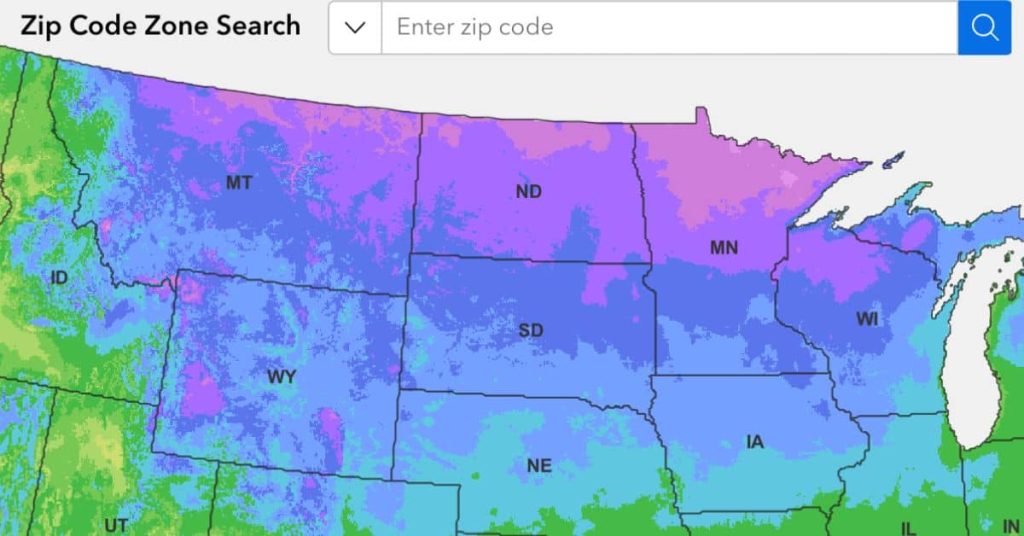
Before you start choosing crops or designing your garden, it’s crucial to know which USDA Plant Hardiness Zone you live in. This map divides the U.S. into zones based on average annual minimum winter temperatures, helping gardeners and farmers select plants that are most likely to thrive in their region. By learning how to accurately find and interpret your zone, you’ll avoid common planting mistakes, choose the right varieties for your climate, and maximize your harvest success. This section will guide you through using the USDA’s online tools and offer practical tips to make the most of this valuable resource.
Searching by Zip Code: Quick Guide
Finding your USDA Plant Hardiness Zone has never been easier thanks to the interactive tools available online. The USDA Plant Hardiness Zone Map website offers a simple search function where you can enter your ZIP code and immediately get your zone. This feature is especially handy if you’ve just moved to a new area or are setting up a garden in an unfamiliar location.
Practical tip: Keep your ZIP code handy when using the site, and make sure to double-check if you’re near a zone border, as planting recommendations can shift over short distances.
Interpreting Zone Colors and Boundaries
When you look at the map, you’ll notice a colorful patchwork stretching across the country. Each color represents a specific zone—these range from the chilly purples and blues of the northern states to the warm oranges and reds of the southern regions.
Understanding these colors is key:
- Cooler zones (1–5): Found in northern states and high-altitude areas; suited for cold-hardy plants.
- Midrange zones (6–8): Cover much of the Midwest and coastal regions; allow a broad variety of crops and ornamentals.
- Warmer zones (9–13): Found in the South and parts of the West Coast; support tropical and heat-loving plants.
If you’re near a boundary, it’s smart to be conservative with plant choices or use microclimate strategies like windbreaks or raised beds to push the limits a bit.
Tips for Using the Interactive Map Effectively
The USDA interactive map is more than just a pretty graphic—it’s a tool you can use to fine-tune your planting decisions.
Here’s how to get the most out of it:
- Zoom in for local details: The map allows you to get close enough to see neighborhood-level zones, which is useful in urban areas or near zone transitions.
- Check historical data: Understanding that the map is based on historical averages, not predictions, helps manage expectations about outlier seasons.
- Use it with other tools: Combine USDA zone info with frost date calendars, soil maps, and local extension office recommendations for a well-rounded planting plan.
Personal insight: I’ve found it helpful to revisit the map every few years—especially after extreme weather seasons—to check if my zone has been updated or shifted, as this can influence everything from crop selection to when I start seeds indoors.
For a hands-on experience, visit the USDA Interactive Map to explore your specific zone, learn about neighboring zones, and discover planting options tailored to your area.
Understanding Zone Numbers and Their Importance
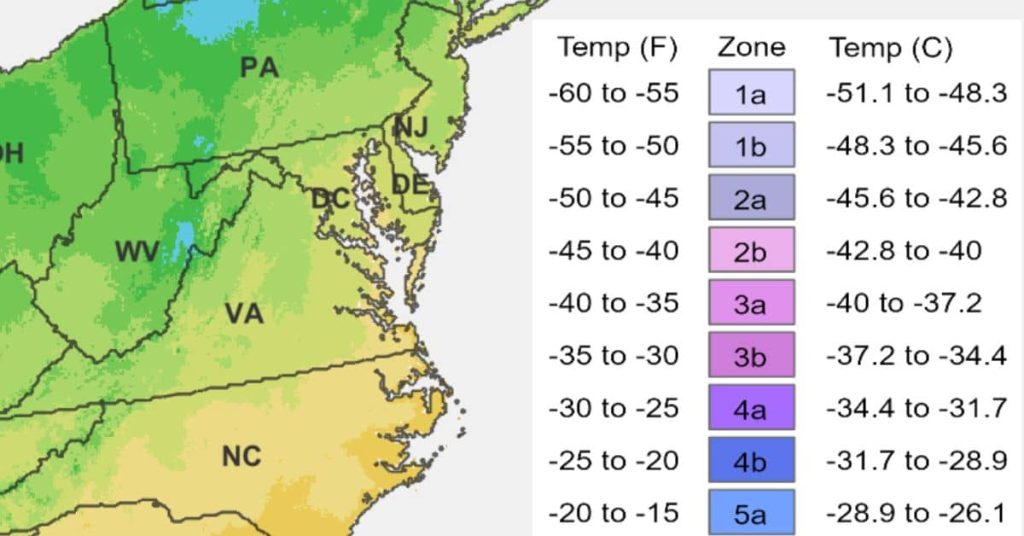
Before you can confidently plant a garden or orchard, you need to understand what your USDA zone number actually means. The USDA Plant Hardiness Zone Map divides the country into 13 zones, each reflecting a different range of average annual minimum temperatures. These numbers are the foundation for selecting crops, trees, and perennials that will thrive in your specific area. By learning to interpret zone numbers, you can avoid common planting mistakes, improve your garden’s success, and make better long-term decisions for your homestead.
Zone Ranges From 1a to 13b Explained
The USDA zones range from 1a (the coldest, with minimum temperatures of -60 to -55°F) to 13b (the warmest, 65 to 70°F). Each zone spans about 10°F, and the “a” and “b” subdivisions split zones into finer 5°F increments. For example, Zone 7a is slightly colder than Zone 7b. This system allows gardeners in vastly different climates — from Alaska to southern Florida — to find crops suited to their specific environment.
Matching Plant Hardiness Ratings to Your Zone
When shopping for seeds, shrubs, or trees, you’ll often see a hardiness rating on the tag or description — for example, “hardy to Zone 6.” This tells you the coldest zone where the plant can survive. Always choose plants that match or exceed your zone number to avoid winterkill. For instance, if you live in Zone 5, a Zone 3–5 perennial will work well, but a Zone 7–9 plant likely won’t survive the winter.
Avoiding Planting Mistakes Based on Zone
One of the most common mistakes gardeners make is ignoring their zone altogether. Planting tender crops too early, selecting trees not rated for your region, or expecting tropical plants to overwinter outdoors in cold zones leads to frustration and wasted effort.
To avoid this:
- Research your zone before you buy plants.
- Use local extension service recommendations.
- Check seed packets, nursery tags, or catalog descriptions for hardiness zones.
By respecting the USDA Plant Hardiness Zone Map, you set yourself up for a productive, resilient garden that works with — not against — your climate.
Best Crops and Plants for Each Zone
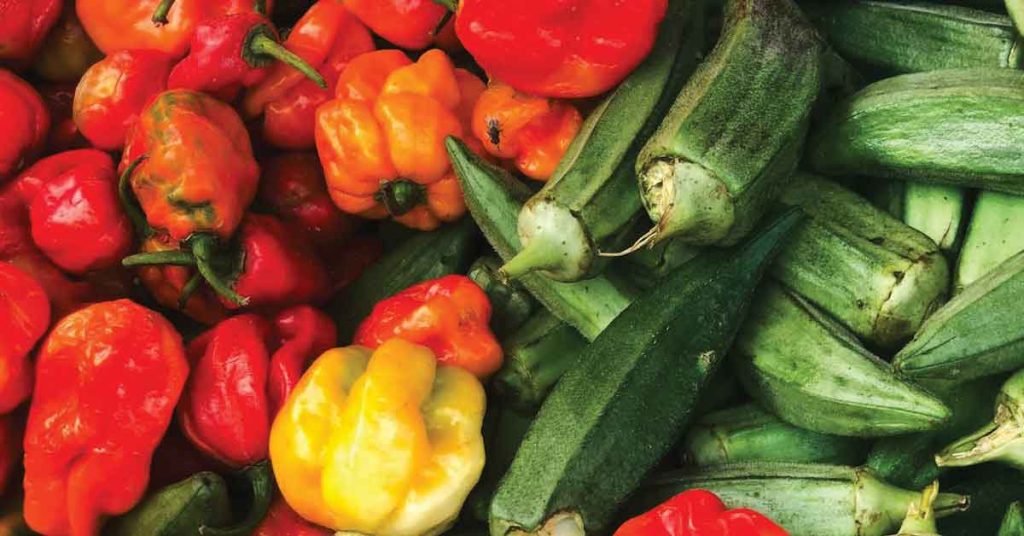
Once you know your USDA zone, the next step is to select crops and plants that will flourish in your unique climate. The USDA Plant Hardiness Zone Map is an invaluable tool for matching your planting choices to your environment, reducing the risk of crop failure and maximizing harvests. This section will walk you through practical, zone-specific recommendations so you can plan with confidence.
Recommended Vegetables and Fruits
When it comes to vegetables and fruits, knowing what thrives in your zone can save you time, money, and frustration. It’s all about matching the right plant to the right place, so you’re setting yourself up for success from the start.
Zone 3–5: Cool-Climate Crops
In the chilly northern zones, where winters are long and summers are short, focus on cold-hardy vegetables like kale, spinach, carrots, and peas. For fruits, apples, cherries, and hardy berries like raspberries and currants thrive. Consider season extension tools like cold frames or row covers to stretch your growing window.
Zone 6–8: Mixed-Climate Crops
These middle zones offer some of the most diverse planting options. Gardeners can grow everything from tomatoes, peppers, corn, and beans to cool-season crops like broccoli and cabbage in early spring and fall. Fruit growers can enjoy peaches, plums, pears, and a variety of berries. This zone also allows for two to three planting cycles per year, making it ideal for both beginners and advanced gardeners.
Zone 9–11: Warm-Climate Crops
In the southern zones, where frost is rare, focus on heat-loving crops like okra, eggplant, sweet potatoes, and melons. Citrus fruits, avocados, figs, and bananas thrive here. While summer heat can be intense, planting in fall or early spring and using shade cloth can help sensitive crops survive.
Perennials, Trees, and Shrubs for Each Zone
Choosing perennials, trees, and shrubs that fit your zone is key if you want plants that come back stronger each year. It’s also a smart way to save time and money on replacements.
Drought-Resistant, Heat-Tolerant, and Cold-Hardy Varieties
- Zones 3–5: Choose cold-hardy perennials like peonies, hostas, and coneflowers. Look for trees like sugar maples and spruce, and shrubs like lilacs and hydrangeas.
- Zones 6–8: Opt for versatile perennials like daylilies and black-eyed Susans, along with trees like dogwoods and magnolias. Heat- and drought-tolerant shrubs like butterfly bush and viburnum are great choices.
- Zones 9–11: Go for tropical and subtropical perennials such as hibiscus and bougainvillea, along with citrus and palm trees. Heat-tolerant shrubs like oleander and lantana add color without demanding much water.
Pro tip: Always check your local extension office or trusted gardening resources for region-specific plant lists, as microclimates can make a big difference even within a single zone.
By using the USDA Plant Hardiness Zone Map as your guide, you’ll build a garden that’s not only beautiful but also resilient — ready to thrive through the seasons in your unique climate.
How Microclimates Impact Your Garden
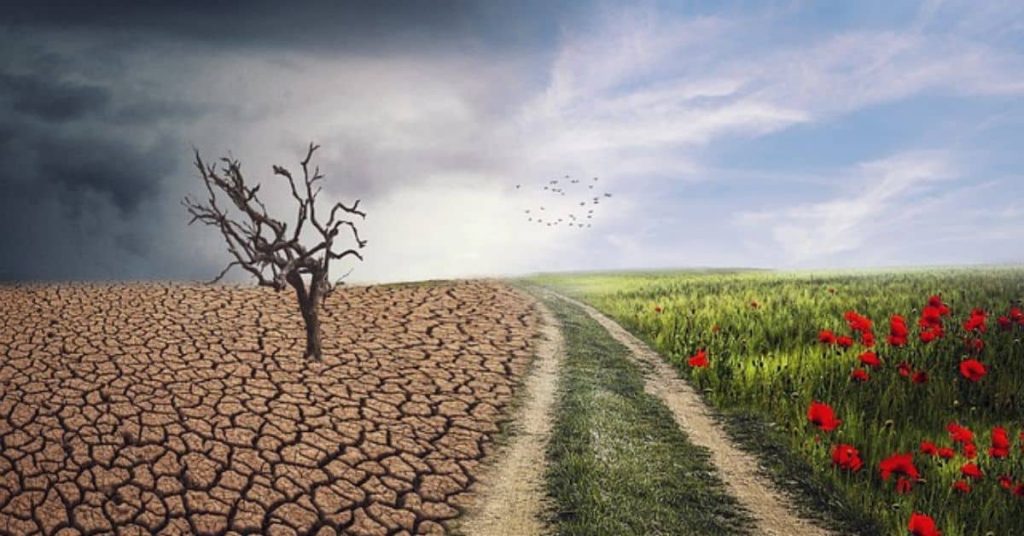
While the USDA Plant Hardiness Zone Map gives you a valuable big-picture view of your climate, it’s just as important to understand what’s happening right in your own backyard. That’s where microclimates come in. These small pockets of unique conditions — warmer, cooler, wetter, or drier than the surrounding area — can significantly affect what grows well on your property. Learning how to identify and work with microclimates can help you go beyond the broad zone recommendations and make even smarter planting choices.
What Is a Microclimate?
A microclimate is essentially a small area within a larger climate zone that experiences different environmental conditions. This might sound technical, but it’s something most gardeners intuitively notice. For example, the south-facing side of a house may warm up earlier in spring, while a shady corner stays cooler and damp longer into the season. Windbreaks, slopes, water features, and even fences can all create these tiny climate pockets. Recognizing them helps you understand where tender plants might thrive or where you’ll need extra protection during cold snaps.
Examples on a Homestead or Backyard
You don’t need a massive property to encounter microclimates — they show up even in small backyards. Here are some common examples:
- South-facing walls or patios tend to absorb and radiate heat, creating a warm zone ideal for heat-loving crops like tomatoes or peppers.
- Low-lying areas can collect cold air and become frost pockets, making them risky spots for sensitive plants.
- Near water sources like ponds or rain barrels, humidity levels are higher, which may benefit moisture-loving plants.
- Under dense trees or next to buildings, shade-loving perennials can thrive where sun-loving crops would struggle.
Homesteaders often use microclimates to stretch their planting options, creating little “climate niches” that allow for more diversity in crops and flowers.
Adapting Garden Plans to Microclimates
Once you’ve identified your microclimates, the next step is using that knowledge to shape your garden plan. Here’s how:
- Match plants to spots where they’ll naturally thrive — don’t fight your conditions.
- Use microclimates intentionally, like placing frost-sensitive plants near stone walls for warmth or using a slope to drain excess water from delicate root crops.
- Experiment and observe. Keep a garden journal noting which areas warm up first in spring, where frost lingers, or which beds dry out fastest.
By combining the USDA Plant Hardiness Zone Map with your own microclimate observations, you create a much more customized and resilient garden. You’ll be able to push the boundaries of what’s possible in your zone — and maybe even surprise yourself with the results.
Adapting Your Garden to Climate Trends
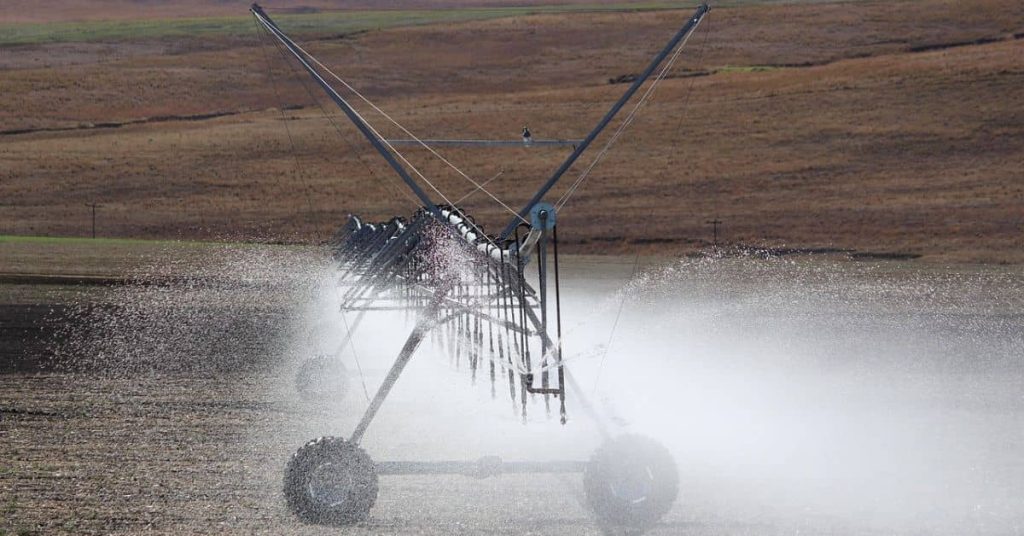
As gardeners and homesteaders, we know that nature rarely stands still — and in recent years, climate trends have become impossible to ignore. While the USDA Plant Hardiness Zone Map gives you a trusted framework for selecting crops and plants, it’s important to understand that these zones aren’t carved in stone. Temperatures are shifting, seasons are lengthening or shortening, and extreme weather is becoming more common. Adapting your garden to these changes can help protect your harvests and ensure long-term success.
USDA Zones vs. Heat Zones
The USDA Plant Hardiness Zone Map is based on average minimum winter temperatures, which tells you what plants can survive the cold. But there’s another side to the story: heat zones. The American Horticultural Society’s Heat Zone Map, for example, measures how many days each year temperatures rise above 86°F, a critical threshold for many plants.
In practical terms, this means you may be in USDA Zone 6 for winter hardiness but in Heat Zone 7 or 8 for summer heat stress. Understanding both gives you a much fuller picture when choosing plants — so you can pick varieties that not only survive the winter but also handle the summer heat.
Climate Change and Shifting Zones
Over the past few decades, scientists and gardeners alike have observed a gradual northward shift in USDA zones. Some areas have moved half a zone or even a full zone warmer compared to previous decades. That’s why it’s crucial to check the most recent version of the USDA Plant Hardiness Zone Map — and stay informed about how conditions are changing in your region.
You may notice that plants once considered “borderline” hardy in your area now thrive, while others struggle. This shift opens the door to trying new crops but also demands more attention to extreme weather events, such as heatwaves or late frosts, which may become more unpredictable.
Adjusting Your Planting Calendar for Zone Shifts
The best gardeners are always observing, experimenting, and adjusting. As climate trends evolve, so should your planting calendar. Here are some practical tips:
- Start seeds earlier indoors if spring arrives sooner in your region.
- Stagger planting dates to account for fluctuating weather, giving you multiple chances for success.
- Choose resilient or adaptable plant varieties that can handle temperature swings or drought.
- Extend the season with row covers, cold frames, or shade cloths to buffer against weather surprises.
It’s also a good idea to keep a simple garden journal. Note frost dates, heatwaves, rain patterns, and harvest times each year. Over time, you’ll build your own hyper-local record that complements the USDA Plant Hardiness Zone Map — and helps you make smarter choices, season after season.
Practical Gardening Tips by Zone
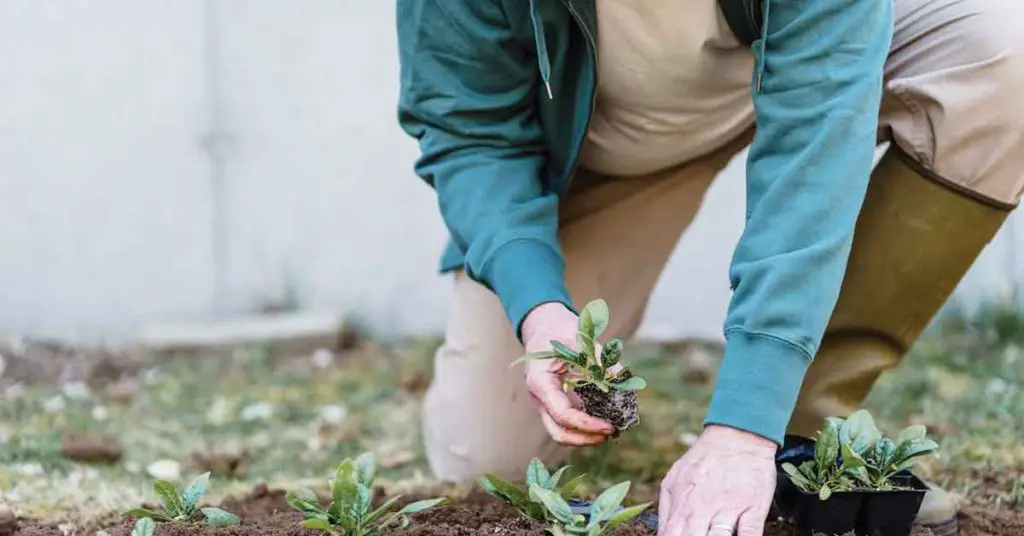
Once you’ve identified your zone on the USDA Plant Hardiness Zone Map, the real magic begins — tailoring your gardening approach to your local conditions. From timing your plantings to selecting companion crops and preparing for unpredictable weather, working in harmony with your zone helps create a resilient, productive garden that thrives year after year.
Planning a Zone-Specific Planting Calendar
Your USDA zone provides a framework for understanding when to plant, but every zone has its own rhythms.
For example, in Zones 3–5, where winters are long and cold, you’ll want to start seeds indoors well before the last frost date and choose cold-hardy varieties like kale, cabbage, and peas. In contrast, gardeners in Zones 9–11 can often plant heat-loving crops like okra, sweet potatoes, and eggplant directly outdoors — and even enjoy a second fall crop.
To get the most from your zone, create a planting calendar that accounts for:
- Last and first frost dates
- Soil temperatures (some seeds germinate best in warm soil)
- Succession planting opportunities to extend harvests
By tuning in to these seasonal markers, you can maximize both yield and resilience.
Companion Planting Strategies
Companion planting is like matchmaking for your garden — pairing plants that help each other thrive.
In cooler zones, planting carrots with onions can help deter pests, while in warmer zones, pairing tomatoes with basil not only improves flavor but also repels aphids. Consider these benefits when planning:
- Pest control: Pair plants that naturally repel each other’s pests.
- Soil health: Combine deep-rooted and shallow-rooted plants to use space efficiently.
- Shade and support: Use taller plants like corn to shelter delicate crops like lettuce or to support climbing beans.
By weaving companion planting into your zone-based garden plan, you encourage a healthier, more diverse ecosystem.
Protecting Plants From Weather Extremes
Even the best zone planning can’t eliminate the occasional weather surprise — an unexpected frost, heatwave, or storm. But you can prepare.
- In colder zones, use row covers, cloches, or cold frames to shield tender seedlings from late frosts.
- In hotter zones, provide shade cloth or mulch to protect roots and reduce water evaporation.
- Throughout all zones, be ready to adapt — have frost blankets, windbreaks, and irrigation adjustments at the ready.
Observing your garden daily and responding to small changes is one of the best defenses against weather extremes. Over time, you’ll become not just a zone-aware gardener, but a weather-wise one too.
Expanding Beyond Outdoor Gardening

The USDA Plant Hardiness Zone Map is usually thought of as an outdoor gardener’s tool, but its insights are just as valuable when you bring your growing efforts indoors or into a greenhouse. Whether you’re nurturing herbs on a windowsill, building a backyard greenhouse, or even running a small hydroponic setup, understanding your zone can help you make smart, productive decisions.
Indoor Gardening and Greenhouses
Indoor gardening offers an exciting chance to grow fresh food and greenery year-round, regardless of what’s happening outside. But even indoors, your USDA zone provides helpful clues.
Can You Use the USDA Map for Indoor Plants?
You might wonder if a map designed for outdoor conditions has any place in your living room — and the answer is yes, but with nuance.
While indoor plants aren’t exposed to frost or freezing temps, the outdoor zone still matters because:
- It shapes the availability of light through the seasons (long summer days vs. short winter days).
- It influences indoor humidity levels, which affect plant health.
- It helps you choose the best times for moving plants outdoors (for hardening off or summer vacations).
For example, a tropical houseplant may thrive by a sunny window in Zone 7 during summer but struggle if you move it outside before the last frost.
Setting Up a Zone-Friendly Greenhouse
Greenhouses allow you to cheat the outdoor calendar — but your USDA zone still sets the baseline for design and management.
In colder zones (3–6), you’ll likely need:
- Insulated walls or double-layered plastic
- Supplemental heat during deep winter
- Cold-hardy crops like spinach and kale in unheated structures
In warmer zones (7–11), ventilation becomes the priority:
- Shade cloths or roll-up sides to prevent overheating
- Misting systems or drip irrigation to maintain moisture
- Heat-tolerant crops like tomatoes, cucumbers, and peppers
A well-planned greenhouse works with your zone, not against it — extending your season without creating a costly climate bubble.
Native and Drought-Resistant Landscaping
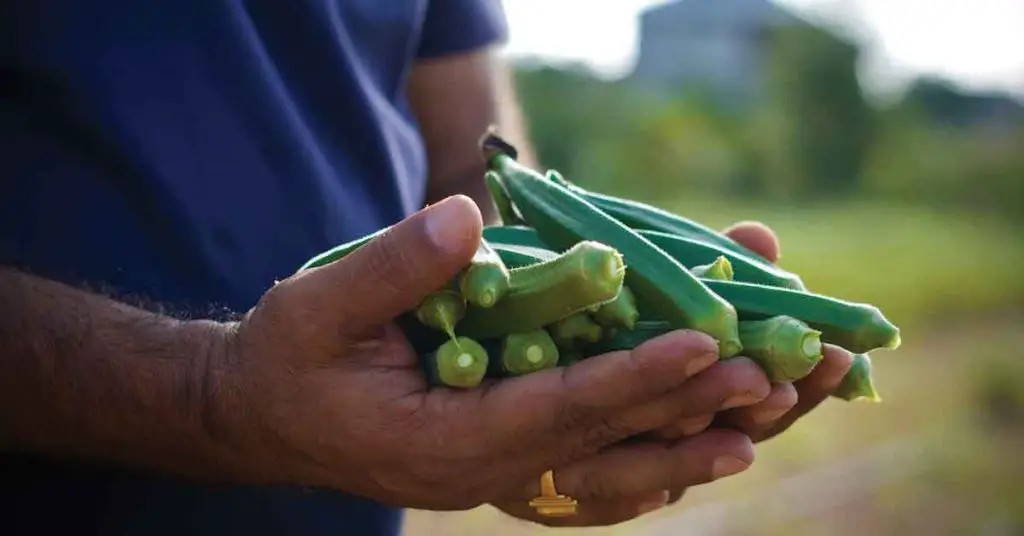
When planning a garden or landscape that thrives with minimal intervention, few strategies are as effective as working with native plants and drought-resistant varieties. The USDA Plant Hardiness Zone Map gives you a head start by identifying plants naturally suited to your region’s climate — which means less watering, fewer chemical inputs, and a more resilient, self-sustaining landscape.
Importance of Native Plants
Native plants are the quiet heroes of any healthy landscape. They’ve evolved over centuries to thrive in your region’s specific conditions — from rainfall patterns to local pests and soil types.
Choosing native species:
- Reduces the need for extra watering, fertilizing, or pest control.
- Supports local wildlife like bees, butterflies, and birds.
- Strengthens soil health and reduces erosion.
For example, if you’re gardening in Zone 6, native wildflowers like purple coneflower or black-eyed Susan not only survive but thrive — providing beauty and ecosystem benefits all season long.
Finding Native Species by Zone
The USDA Plant Hardiness Zone Map helps narrow down which native species will work best in your area.
Start by:
- Checking local extension offices, native plant societies, or botanical gardens for plant lists.
- Using online native plant databases that allow you to search by ZIP code and zone.
- Visiting natural areas nearby to see what’s thriving without human help.
This approach ensures you’re planting species that are already “pre-approved” by your climate, saving time, money, and water.
Drought-Tolerant Plants and Water-Saving Techniques
With climate change increasing the risk of drought in many regions, selecting water-wise plants is more important than ever.
By zone, examples include:
- Zones 3–5: Russian sage, yarrow, sedum
- Zones 6–8: Lavender, ornamental grasses, coreopsis
- Zones 9–11: Agave, lantana, succulents
In addition to plant choice, smart practices can stretch every drop:
- Apply mulch to retain soil moisture and suppress weeds.
- Group plants with similar water needs together.
- Use drip irrigation or soaker hoses to deliver water efficiently.
- Harvest rainwater in barrels for later use during dry spells.
Adjusting When You Relocate
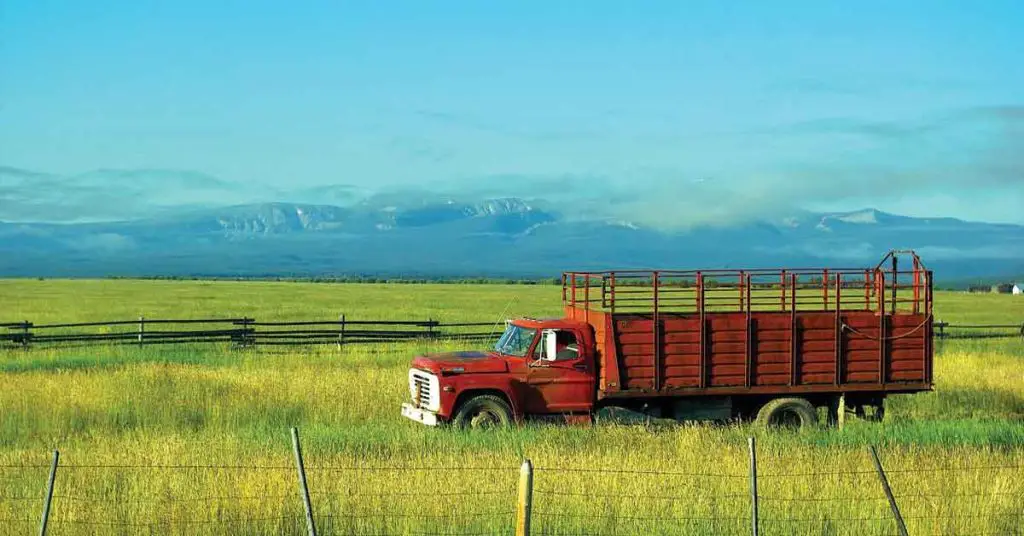
Moving to a new home can be exciting, but if you’re a gardener, it also comes with a unique challenge: adjusting your gardening plans to a new USDA Plant Hardiness Zone. Whether you’re going from a snowy Zone 4 to a sunny Zone 9 or vice versa, understanding how to shift your plant choices and techniques can make all the difference in keeping your green thumb thriving.
Moving Between Cold and Warm Zones
Relocating between climate extremes means rethinking what you grow and how you care for it.
- From cold to warm zones: You’ll discover a wider range of crops and longer growing seasons. Tropical plants, citrus trees, and heat-loving vegetables like peppers and okra may now be options. However, you’ll also need to learn how to handle heatwaves, manage pests that don’t exist in colder zones, and possibly plant during cooler parts of the year.
- From warm to cold zones: Expect shorter growing seasons and fewer tropical options, but you’ll also gain access to cool-season crops like kale, broccoli, and carrots. Understanding frost dates, using row covers or cold frames, and selecting cold-hardy perennials become essential.
No matter the direction, give yourself time to get to know your new zone’s rhythm. Visit local nurseries, talk to neighbors, or join a gardening group to get insider advice on what thrives.
Adjusting Plant Choices and Gardening Practices
Once you know your new USDA zone, it’s time to rethink your planting strategy.
- Choose appropriate plants: Check plant tags or catalogs for zone ratings, and don’t assume your old favorites will thrive. Even reliable performers like hydrangeas or tomatoes may behave differently depending on the zone.
- Adapt your techniques: Pay attention to soil type, sunlight patterns, and moisture levels — all of which may be very different from your previous garden. You might need to amend the soil, adjust irrigation, or rethink planting times.
- Start small: Consider trialing a few plants your first year to see how they perform before going all-in on big garden plans. This lets you learn from experience and reduces the risk of frustration.
Remember, gardening in a new zone is an opportunity to experiment and expand your skills. Use the USDA Plant Hardiness Zone Map as a trusted guide, but stay open to learning from local resources and your own hands-on experience.
Combining the USDA Map with Other Gardening Tools

While the USDA Plant Hardiness Zone Map is an essential starting point for any gardener, it’s only one piece of the puzzle. To truly fine-tune your planting decisions and maximize your garden’s success, it helps to combine it with other valuable tools like regional climate guides, soil maps, and plant databases. Together, they paint a fuller picture of what will thrive in your unique space.
Sunset Climate Zones
The Sunset Climate Zone system is popular on the West Coast and offers more detailed insights than the USDA map alone. Unlike the USDA zones, which are based mostly on minimum winter temperatures, Sunset zones factor in length of growing season, summer heat, humidity, wind, and rainfall patterns. This makes them incredibly useful if you live in areas like California, Arizona, or the Pacific Northwest where climate differences can be sharp even across short distances.
Using both systems together gives you a clearer sense of which plants will perform well year-round, not just survive the winter.
Soil Maps and pH Charts
Temperature matters — but so does soil. Even if your USDA zone says a plant should grow in your area, it won’t thrive if the soil isn’t right. That’s where soil maps and pH charts come in. These tools help you understand your native soil’s texture, fertility, and acidity or alkalinity.
You can usually get local soil maps from your state extension office or online resources, and many offer pH testing services or kits. Knowing your soil conditions allows you to select plants that naturally fit your ground — or know what amendments you’ll need to improve it.
Using Online Plant Databases
Plant selection has never been easier, thanks to online databases. Websites like the Missouri Botanical Garden Plant Finder or Dave’s Garden let you search for plants by USDA zone, sunlight needs, soil preference, and even bloom time.
These resources help you:
- Cross-check whether a plant’s recommended zone fits yours
- Find companion plants that share similar requirements
- Explore native and drought-resistant options for your garden
By pairing the USDA Plant Hardiness Zone Map with these databases, you can confidently narrow down your choices and avoid wasting time or money on plants that just won’t work.
Avoiding Common Gardening Mistakes
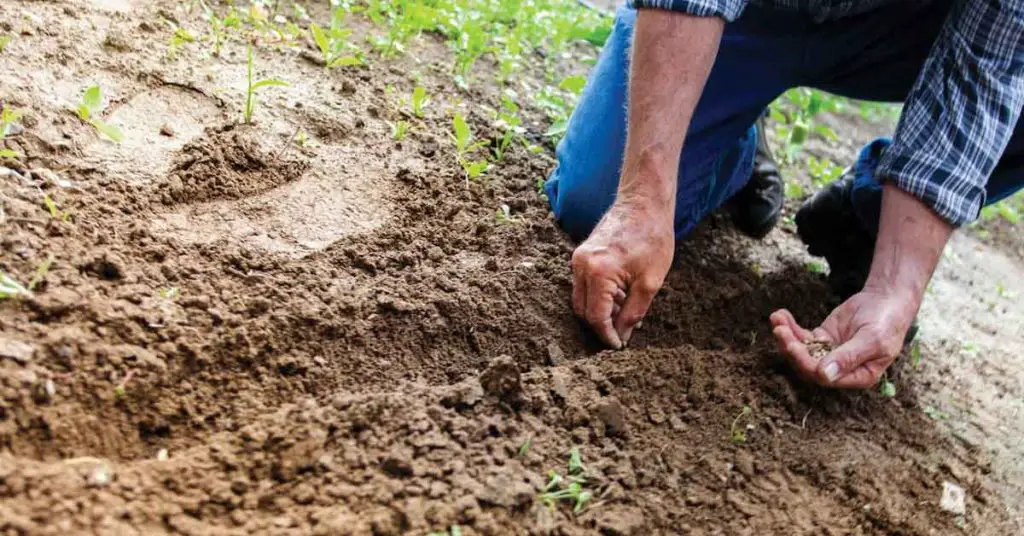
Even seasoned gardeners can fall into traps when planning their gardens, especially when relying too heavily on the USDA Plant Hardiness Zone Map without considering other key factors. While the map is an invaluable tool, it’s just the foundation — and understanding how to use it wisely can mean the difference between a thriving garden and one filled with frustration. Let’s look at three of the most common mistakes and how you can avoid them.
Overlooking Microclimates
One of the easiest mistakes to make is assuming your entire property fits neatly into the same USDA zone. Microclimates can create pockets of warmer or cooler conditions right in your backyard.
For example, a south-facing wall may absorb and radiate heat, allowing you to grow plants typically suited for warmer zones, while a shady, low-lying area may stay cooler and wetter. Ignoring these microclimates can lead to underperforming plants or unnecessary losses. Walk your property, observe sun patterns, and note areas protected from wind or exposed to cold — this extra attention pays off.
Ignoring Soil and Sun Needs
The USDA Plant Hardiness Zone Map focuses on cold hardiness, not soil type or sun exposure. A common mistake is selecting plants solely by zone without checking whether they need full sun, partial shade, sandy soil, or rich loam.
For example, lavender may survive in Zone 6, but if you plant it in heavy clay without adequate drainage, it will struggle no matter what the map says. Get to know your soil through testing, observe where the sun falls throughout the day, and match plants to these conditions for the best results.
Misunderstanding Frost Dates
Another frequent error is confusing frost dates with hardiness zones. While related, they’re not the same. The USDA map tells you what can survive winter in your area, but it doesn’t tell you when the last spring frost or first fall frost typically occurs — and that’s critical for planting annuals and vegetables.
Planting tomatoes too early because they’re zone-appropriate, for example, can result in frost-damaged plants. Always look up your average local frost dates and combine that knowledge with your zone for a smarter planting schedule.
Community, Resources, and Trends

Gardening isn’t just a solo journey — it’s often strengthened by community, shared wisdom, and staying connected to new ideas. Whether you’re a first-time gardener or a seasoned grower, tapping into local groups and online spaces can inspire you, help troubleshoot problems, and introduce you to varieties and practices suited for your zone. Here’s how to get plugged in.
Finding Local Gardening Groups
There’s nothing quite like learning from neighbors who garden in the same conditions. Local gardening clubs, Master Gardener programs, and community garden groups often organize meetups, workshops, and volunteer events. These gatherings are fantastic for exchanging zone-specific advice — like which tomatoes perform well in Zone 7 or how to winterize perennials in Zone 5.
To find a group, check your local extension office, library, or farmers market bulletin board, or search Facebook groups focused on gardening in your state or zone.
Seed Swaps and Resource Sharing
Seed swaps are one of the most rewarding (and fun!) ways to connect with fellow gardeners. These events allow you to share seeds, cuttings, and even tools, often at little or no cost. The best part? You’ll likely get varieties already proven to thrive in your USDA zone — and sometimes even heirlooms or rare plants you can’t find at garden centers.
You can find seed swaps through local groups, online forums, or national organizations like Seed Savers Exchange. Even small-scale swaps between neighbors can help build resilience in your local gardening community.
What’s Trending on Social Media and YouTube
If you want to see the cutting edge of gardening, social media and YouTube are buzzing with inspiration. TikTok, Instagram, and YouTube are packed with creators sharing their zone-specific gardening journeys, DIY hacks, and reviews of new plant varieties.
Look for influencers or hashtags that match your USDA zone — like #Zone6Gardening or #NativePlantsZone9 — to get tailored tips and discover what’s trending. Whether it’s drought-tolerant landscaping, vertical gardening, or no-dig methods, social platforms can connect you with both local and global gardeners.
For a deeper dive, check out trusted resources like The Old Farmer’s Almanac, which offers planting charts, frost dates, and tips tailored to your zone.
Reader Stories and Real-Life Tips

The USDA Plant Hardiness Zone Map is more than just a chart — it’s a tool that comes alive in the hands of gardeners across the country. Real-life experiences, successes, and even occasional missteps help bring the map’s lessons into focus. Here’s a look at how gardeners from various zones have used the map to their advantage — and how you can join the conversation.
Success Stories by Zone
Gardeners often say that the best advice comes from those who have been in your shoes — and in your climate. From Zone 3 growers in Minnesota who swear by hardy rhubarb and raspberries, to Zone 10 gardeners in Florida thriving with tropical fruits like mangoes and bananas, success stories can inspire and guide.
Many gardeners report that once they started choosing plants suited to their zone, their gardens became more productive, with fewer losses. Whether it’s someone in Zone 7 mastering winter-hardy kale or a Zone 5 homesteader planting the perfect apple variety, these stories highlight the real power of matching crops to climate.
Lessons From Zone Mismatches
Of course, not every planting adventure goes as planned. Plenty of gardeners have learned the hard way what happens when you ignore your USDA zone — whether it’s a fig tree that didn’t survive a harsh Zone 6 winter or a cool-weather lettuce bolting too early in a hot Zone 9 spring.
These lessons remind us why the USDA Plant Hardiness Zone Map matters — and why local experimentation matters just as much. Gardeners who share their failures often help others avoid the same mistakes, creating a collective knowledge base that’s incredibly valuable.
Share Your Photos and Tips
Your experience matters, too! Whether you’re proud of your first successful tomato harvest, a native pollinator garden that’s buzzing with life, or you’ve figured out how to push the limits of your zone, your story can inspire others.
Consider sharing your photos and tips on social media, local gardening forums, or with gardening groups in your area. Even better, leave a comment or send a message to your favorite gardening websites or YouTube channels — they often love to highlight reader stories and community success.
Together, we can help build a rich, supportive gardening community, where everyone learns, grows, and celebrates the joys of gardening in their unique zone.
Conclusion: Make the Most of USDA Hardiness Zone Map
As you’ve seen throughout this guide, the USDA Plant Hardiness Zone Map is more than just a reference chart — it’s a trusted companion for gardeners and homesteaders who want to work with nature, not against it.
Summary of Key Takeaways
Understanding your zone helps you select crops, perennials, and trees that are set up to thrive, not just survive. By using the zone map alongside tools like microclimate awareness, soil knowledge, and local growing tips, you can create a garden that’s both productive and resilient. Remember, the map is just a starting point — it’s your hands-on experience that brings it to life.
Experiment and Learn
While the USDA Plant Hardiness Zone Map gives you a reliable framework, don’t be afraid to experiment! Every yard, balcony, or homestead has its quirks, and sometimes trying an “on-the-edge” plant can lead to surprising success. Pay attention, take notes, and treat every season as an opportunity to learn and grow.
Join the Gardening Community
Perhaps the best part of gardening is that you’re never doing it alone. Join local gardening groups, online forums, or even neighborhood seed swaps to share your stories and learn from others. Whether you’re celebrating a bumper crop or troubleshooting a tricky season, connecting with fellow growers makes the journey richer and more rewarding.
Here’s to planting smart, growing boldly, and enjoying every moment in your zone!
Disclaimer: The information provided in this article is for general informational purposes only and is not intended to be a substitute for professional advice. The author of this article does not claim to be an expert in homesteading and the information provided should not be relied upon to make decisions about your own homesteading journey. Please do your own research and consult with a qualified professional before making any decisions about your homestead.
Share via:
Shaun Alexander is the main writer and editor for HomesteadingSimple.com. With a strong passion for homesteading and sustainability, Shaun has dedicated his life to learning and sharing information about a simple, fulfilling existence tied to the land. His expertise ranges from gardening and livestock management to off-grid living and DIY projects, reflecting the diverse skills necessary for a successful homesteading lifestyle. Shaun’s goal is to inspire and educate others about the possibilities of homesteading, whether in rural, suburban, or urban settings, and to provide practical advice and tips for both beginners and seasoned homesteaders. He believes in a future where more people return to their roots, embracing a life of self-sufficiency and harmony with nature.



